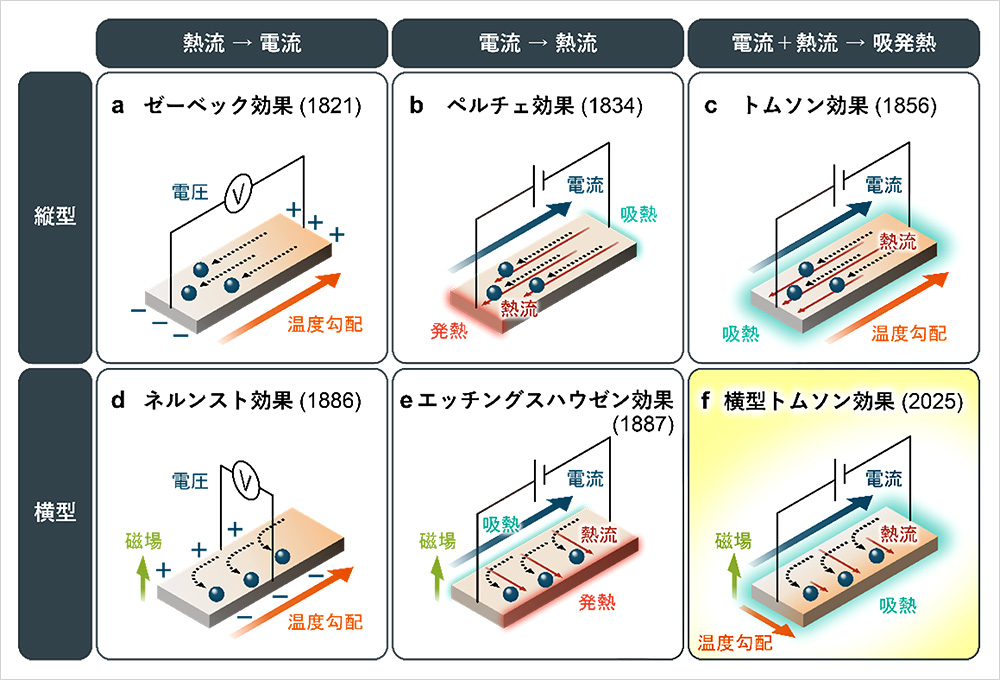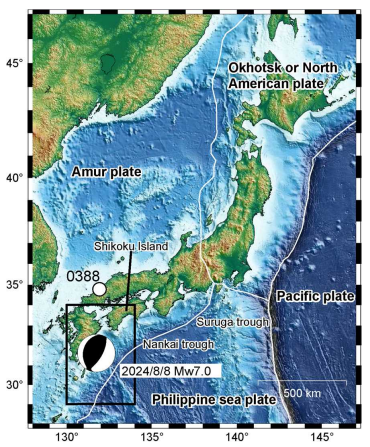2025-06-26 物質・材料研究機構,名古屋大学,東京大学,科学技術振興機構
 図: 縦型・横型熱電効果の模式図
図: 縦型・横型熱電効果の模式図
<関連情報>
- https://www.nims.go.jp/press/2025/06/202506260.html
- https://www.nims.go.jp/press/2025/06/rcmtj60000008x8p-att/202506260.pdf
- https://www.nature.com/articles/s41567-025-02936-3
横トムソン効果の観測 Observation of the transverse Thomson effect
Atsushi Takahagi,Takamasa Hirai,Abdulkareem Alasli,Sang J. Park,Hosei Nagano & Ken-ichi Uchida
Nature Physics Published:26 June 2025
DOI:https://doi.org/10.1038/s41567-025-02936-3
Abstract
The Thomson effect refers to volumetric heating or cooling in a conductor when a charge current and a temperature gradient are applied in the same direction. Similarly, it is expected that a conductor will be heated or cooled when a charge current, a temperature gradient and a magnetic field are applied in orthogonal directions. This phenomenon, referred to as the transverse Thomson effect, has not been experimentally observed. Here we report the observation of this effect in a semimetallic Bi88Sb12 alloy with thermoelectric imaging. We can switch between heating or cooling by changing the direction of the magnetic field. Our experiments and analyses reveal the essential difference between the conventional and transverse Thomson effects. Whereas the former depends sorely on the temperature derivative of the Seebeck coefficient, the latter depends on the temperature derivative and the magnitude of the Nernst coefficient. The observation of the transverse Thomson effect provides a new concept for active thermal management technologies.


